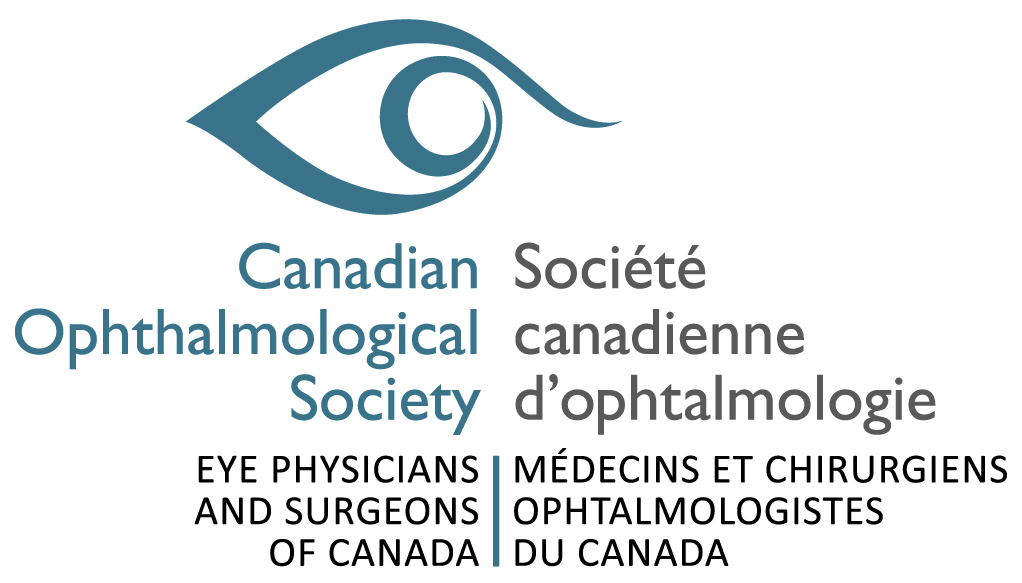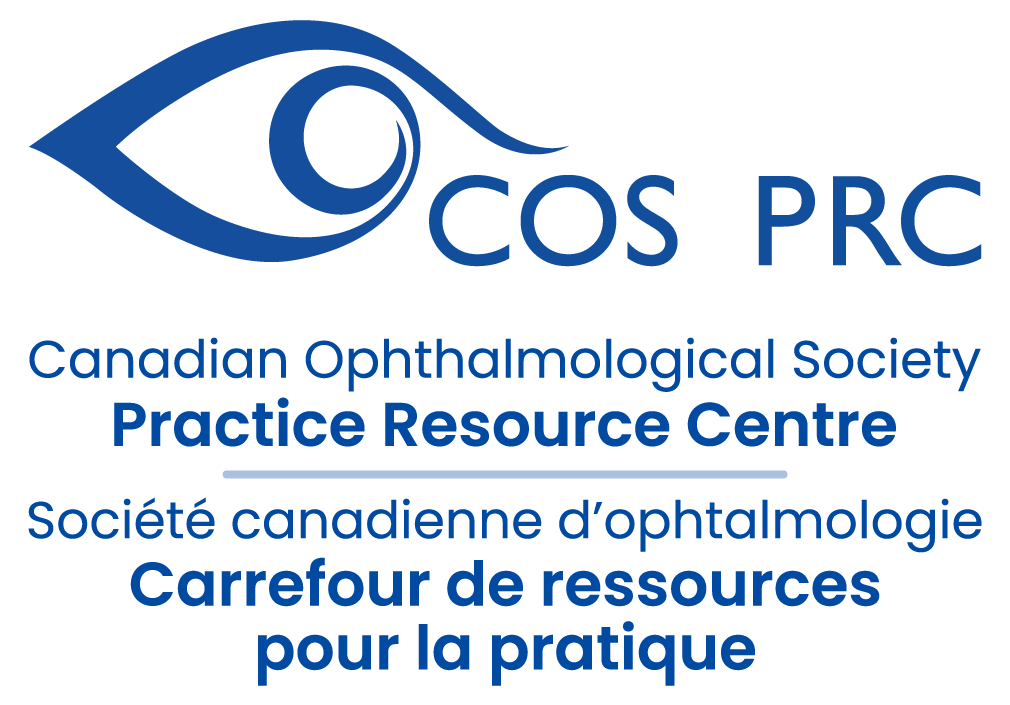December 2020 Issue Highlights
The December 2020 CJO is available online. Here are some of the highlights in this issue:
Resident Perspectives + visual abstract: Our residents have summarized 4 articles that they feel are relevant to ophthalmology learners here in Canada and around the globe, including the article featured in our December visual abstract, Ocular hypertension following 40 mg sub-Tenon triamcinolone versus 0.7 mg dexamethasone implant versus 2 mg intravitreal triamcinolone.
Reviews and original research articles:
- Noninfectious endophthalmitis following intravitreal triamcinolone acetonide: clinical case and literature review [review]
- Hyporeflective micro-elevations and irregularity of the ellipsoid layer: novel optical coherence tomography features in commotio retinae [original research]
- “Basket” mattress suture to manage positive vitreous pressure during penetrating keratoplasty [original research]
- Three-dimensional analysis of choroidal vessels in eyes with Vogt-Koyanagi-Harada disease before and after treatment [original research]
Research letters, photo essays, and case reports:
- Spectral-domain optical coherence tomography features in cases of pre-eclampsia and the relationship with systemic parameters [research letter]
- Endothelial dysfunction after scleral lens use in patients with herpetic eye disease [research letter]
- Paracentral acute middle maculopathy after meningococcal vaccination in a young female [case report]
- Exercise in isolating during novel coronavirus 19: a case report of bilateral ocular trauma from elastic resistant bands [case report]
- Ophthalmic artery occlusion after dermal fillers injection [photo essay]
- Massive orbital teratoma [photo essay]
Follow the CJO on social media:
Twitter: @CanJOphth
Instagram: @cjo_jco
Facebook: CanJOphth
Navigating the Road to Retirement
Consider the following resources as you navigate the road to retirement.
Physician Retirement Readiness Study – May 31, 2019 https://invested.mdm.ca/e-books-and-whitepapers/md-physician-retirement-readiness-study
Physician Financial Literacy Study – January 10, 2020 https://invested.mdm.ca/e-books-and-whitepapers/md-physician-financial-literacy-study
Closing or Leaving a Practice
https://www.cmpa-acpm.ca/en/advice-publications/browse-articles/2020/closing-or-leaving-a-practice-tips-for-primary-care-physicians
How to Manage Your Medical Records
https://www.cmpa-acpm.ca/en/advice-publications/browse-articles/2003/a-matter-of-records-retention-and-transfer-of-clinical-records
Life After Medicine – A Resource Center designed for retiring and retired physicians. aftermedicine.com

Possibilités d’apprentissage virtuel en chirurgie
La pandémie de COVID-19 a eu une incidence sur notre façon d’apprendre et d’échanger des idées. Il y a de nombreuses innovations impressionnantes en enseignement didactique, presque tous les grands congrès et conférences passant à des plateformes en ligne. Cependant, l’éducation en chirurgie n’est pas aussi facile à transformer en format à offrir en ligne, en raison des complexités inhérentes à la présentation virtuelle de ces idées. Il est prioritaire pour les ophtalmologistes de trouver et de faire connaître les ressources pédagogiques offertes en ligne en chirurgie. Le Prism Eye Institute est l’une des ressources que tout chirurgien et chirurgien en formation devrait explorer. Les séances agréées sont disponibles en ligne gratuitement et sont offertes toutes les semaines ou toutes les deux semaines. Présentées de façon amusante et interactive, elles sont de bons moyens de révision pour les chirurgiens expérimentés et d’excellents outils d’apprentissage pour les chirurgiens en formation. Les sujets déjà abordés comprennent les cas difficiles de cataracte, les complications intraopératoires, les cas de glaucome et bien d’autres. On peut accéder à ces séances en ligne en s’inscrivant à l’adresse suivante :
Prism Eye Round https://www.prismeyeinstitute.com/webinars/
Ressources recommandées par Zainab Khan, MD FRCSC Membre du Comité du Carrefour de ressources pour la pratique Société canadienne d’ophtalmologie
Launch weekend for Global Education and Research Society of Ophthalmology
Launch weekend for Global Education and Research Society of Ophthalmology GERSO (Global Education and Research Society of Ophthalmology) announce the launch of the GERSO Educational Series . This free digital training is provided by a Global faculty of leading ophthalmologists.
The 2-part training will take part on:
Date: Saturday 26th September and Sunday 27th September
Time: 1.30 & 5.30 pm GMT. 9:30am – 1:30pm EDT .
Registration:
Registration is FREE and you can register here: http://events.constantcontact.com/register/event?llr=qq7ofgjab&oeidk=a07eh96e05r5b568ba7
Access Details:
For more details visit the GERSO.ORG website.
Symposiums 2020 de la SCO sur la rétine – Modules agréés (Section 3)
Crédits de Section 3 : Programmes d’autoévaluation agréés
Joignez-vous à nous pour des activités agréées d’apprentissage sur demande comportant deux symposiums du Congrès annuel virtuel 2020 de la SCO. Obtenez des crédits de Section 3 en participant à ces deux programmes d’autoévaluation :
Accédez aux programmes ici : http://www.cos2020symposia.com
Pour répondre aux critères d’agrément, vous devez faire un prétest et un post-test. De plus, on vous demandera de répondre à un sondage d’évaluation après l’activité. Les certificats de participation pourront être téléchargés. La Section 3 du Programme de maintien du certificat du Collège royal des médecins et chirurgiens du Canada prévoit que vous pouvez réclamer un maximum de 1,5 heure pour l’achèvement de chacune des deux activités d’apprentissage (total de 3 heures).
- La guerre infinie de la rétine : visons-nous l’assèchement total? et
- Rapport spécial DMLA-OMD : matière à réflexion.

Détails d’accès
Participez aux modules en ligne en cliquant sur le lien suivant : http://www.cos2020symposia.com
Congrès annuel 2020 de la SCO – Archives
Le Congrès annuel et exposition 2020 de la SCO a eu lieu en format virtuel du 26 au 28 juin 2020. Grâce aux liens ci-dessous, vous pouvez accéder aux documents du congrès qui demeurent pertinents pour votre pratique. Passez en revue les enregistrements des séances, les affiches virtuelles, les vidéos chirurgicales et parcourez les présentations sur papier enregistrées. Obtenez des crédits de Section 3 grâce à deux programmes d’autoévaluation agréés élaborés à partir des deux symposiums élaborés conjointement, La guerre infinie de la rétine : visons-nous l’assèchement total? et Rapport spécial DMLA-OMD : matière à réflexion.
Programmes agréés d’autoévaluation, Section 3 – Visitez le site web
Obtenez des crédits de Section 3 en participant à ces deux programmes d’autoévaluation fondés sur deux symposiums enregistrés élaborés conjointement :
- La guerre infinie de la rétine : visons-nous l’assèchement total?
- Rapport spécial DMLA-OMD : matière à réflexion.
Affiches virtuelles et vidéos chirurgicales – Visitez le site web
Réclamez des crédits de Section 2. Parcourez les affiches virtuelles et documentez vos principaux apprentissages à l’aide du formulaire Poster Transcript que vous pouvez soumettre dans MAINPORT pour inscrire vos crédits [Include pdf of 2020 Poster transcript: Z:\2020\Annual Meeting\Abstracts\Posters].
Présentations sur papier -Visitez le site web
Parcourez les résumés sur papier et les résumés accompagnés d’une narration mettant en lumière la recherche novatrice en ophtalmologie. Réclamez ensuite des crédits de Section 2 de MAINPORT, sous « lecture d’articles ».
Enregistrements de séance : Visitez la chaîne Youtube de la SCO
Obtenez des connaissances de pointe grâce au visionnement sur demande des séances de surspécialités enregistrées du Congrès annuel 2020 de la SCO, qui portent notamment sur l’ophtalmologie en santé publique et mondiale, la chirurgie de la cataracte, la rétine, le glaucome, la neuro-ophtalmologie, la cornée et la chirurgie réfractive, les intérêts des résidents et des jeunes ophtalmologistes et l’ophtalmologie pédiatrique. Réclamez des crédits de Section 2 pour « lecture d’articles » dans MAINPORT.
Editorial from AAO: COVID-19 and the Ophthalmology Match
August 11, 2020

COVID-19 and the Ophthalmology Match
David A. Quillen, MD – Hershey, Pennsylvania
R. Michael Siatkowski, MD – Oklahoma City, Oklahoma
Steven Feldon, MD, MBA – Rochester, New York, on behalf of the Association of University Professors of
Ophthalmology
The coronavirus disease 2019 (COVID-19) pandemic has impacted ophthalmology and medical education profoundly. In an effort to reduce the transmission of severe acute respiratory syndrome coronavirus 2, the American Academy of Ophthalmology issued a statement on March 18, 2020,urging all ophthalmologists immediately to cease providing any treatment other than urgent or emergent care.1 This recommendations endorsed by every major ophthalmology organization in the United States resulted in a 79% reduction in care, the highest decline of any medical or surgical discipline.2 Concurrently, the Association of American Medical Colleges recommended that medical schools pause all medical student clinical rotations and suggested that medical students not be involved in any direct patient care.3 The disruption was unprecedented. Medical students were unable to complete core clerkship and specialty electives at a critical time in their training. Imposed travel restrictions limited their ability to pursue rotations away from their home institutions (“away rotations”), global health experiences, and academic meetings. Social distancing requirements interrupted research activities and prevented some medical students from completing the United States Medical Licensing Examinations (USMLEs).
Read the Full Editorial, COVID-19 and the Ophthalmology Match Editorial here.
ASOA EyeTalks Radio
About Podcast : EyeTalks Radio delivers strategies and techniques for success in the field of ophthalmic practice management through rich content and periodic interviews with subject matter experts on topics of interest to those who run the business side of ophthalmology
Frequency: 2 episodes / quarter
Join the conversation to the ASOA EyeTalks radio podcast here.
American Academy of Ophthalmology – Global Ophthalmology Resources

The American Academy of Ophthalmology (AAO) is the US counterpart to the Canadian Ophthalmological Society, and is the world’s largest association of eye physicians and surgeons. As one of the leading global eye health organizations, they have published a number of excellent resources related to global ophthalmology, including:
Global Ophthalmology Guide – The AAO’s Global Ophthalmology Guide is an interactive database of articles, training opportunities, and other interesting resources that span a large range of global ophthalmic topics.
Epidemiology and Biostatistics for the Global Ophthalmologist – Epidemiology and Biostatistics for the Global Ophthalmologist is an easy-to-browse adaptation from the book of the same name by Alfred Sommer, MD, MHS. The resource is targeted towards ophthalmologists in practice or training who desire a fundamental understanding of epidemiology, statistics, and interpretation of ophthalmic research literature.
Readers can expect to:
- Review key concepts in epidemiology along with their applications to international ophthalmology.
- Describe common types of statistics found in ophthalmic literature.
- Review examples of outstanding clinical research.
Ethics in Global Ophthalmology – In global clinical care and research, ophthalmologists must always act in the best interests of patients and the local community by maintaining high ethical standards. This collection of content reviews the ethical role of trainees and risk management in a global setting, and the numerable ethical challenges in global practice: appropriate supervision, competence, informed consent, perioperative care, patient vulnerability and privacy, and potential conflicts of interest. Please note that you must be logged in to the AAO website to access this content.
Volunteer Work in Global Ophthalmology – Volunteering abroad is undergoing a sea change. Gone are the days of simply flying overseas to an under-resourced community, performing hundreds of cataract surgeries, and returning home to your practice. Most communities now have their own health systems in place with local physicians who can perform procedures at a lower cost than in the past. This resource is designed to help ophthalmologists increase their knowledgebase and efficacy as volunteers in eye health on the global stage.



